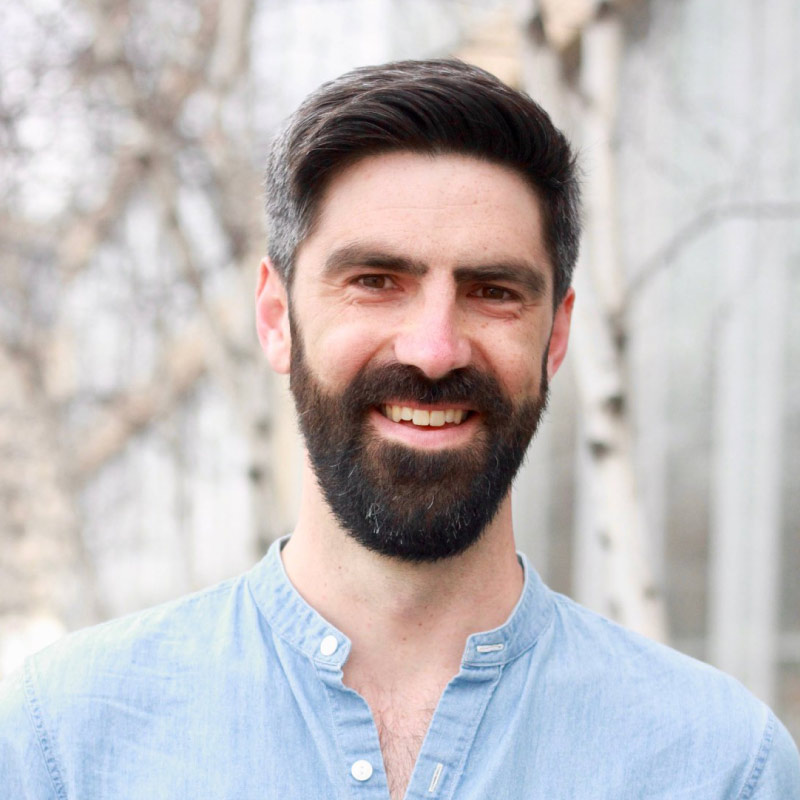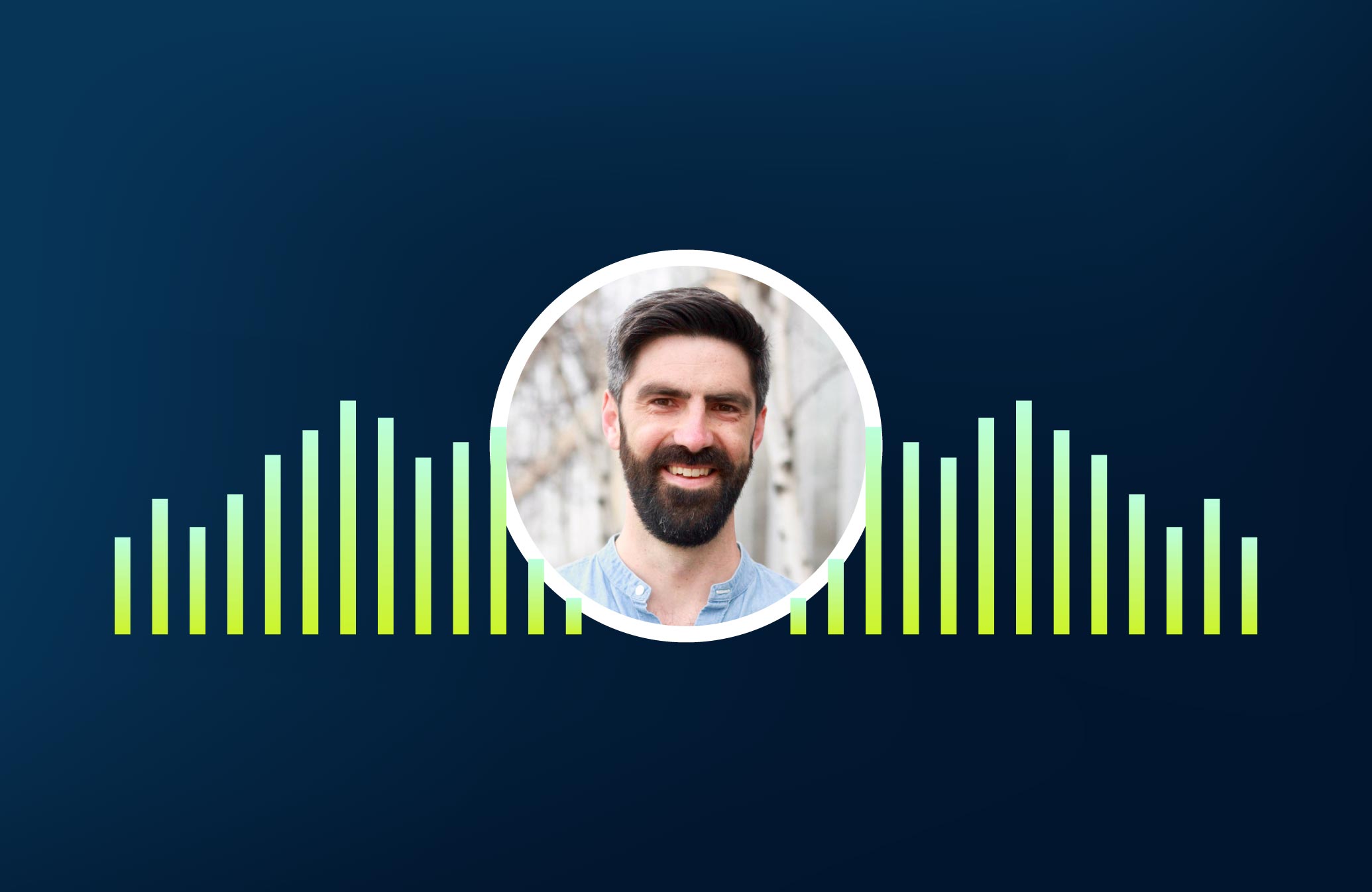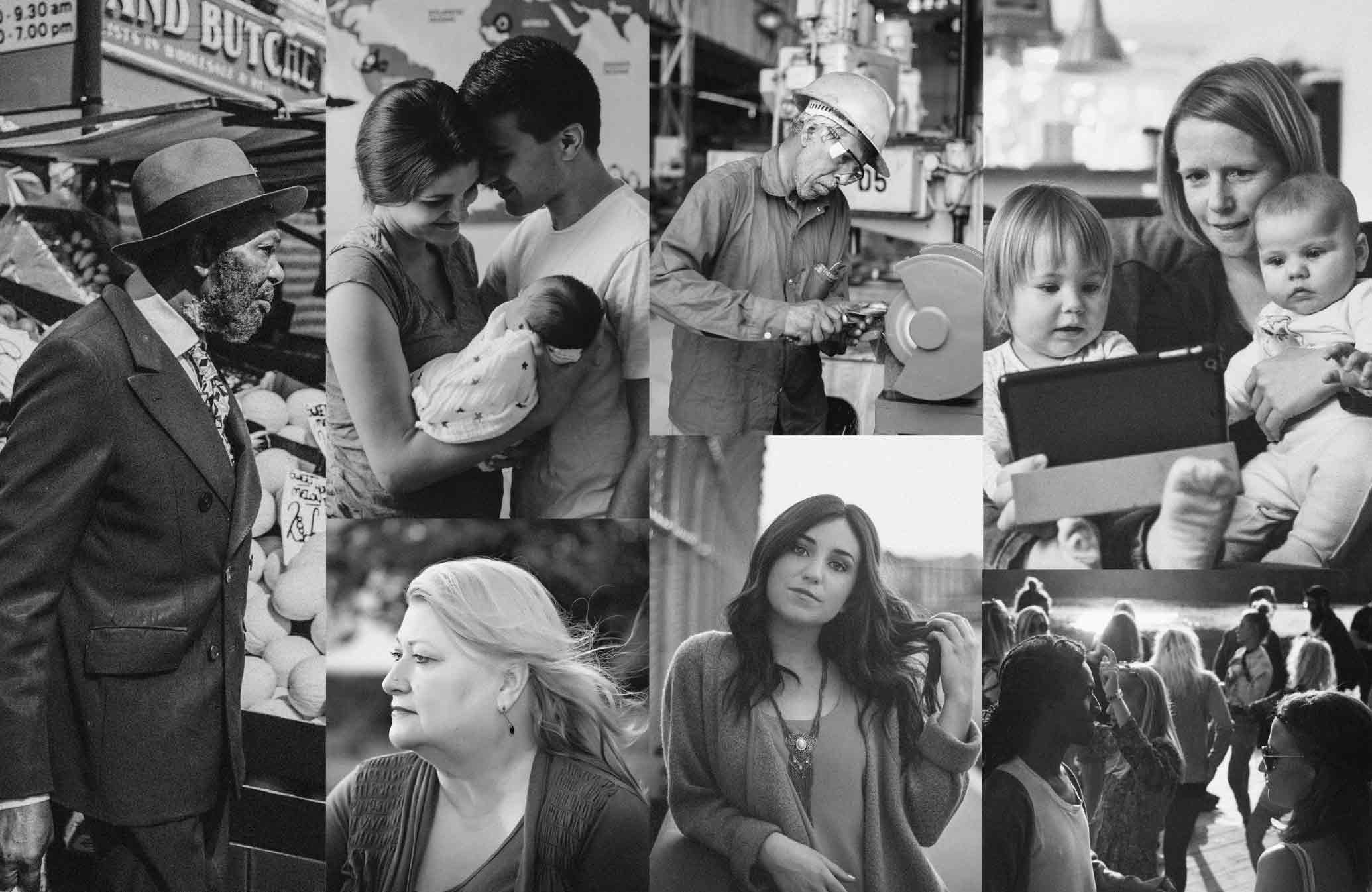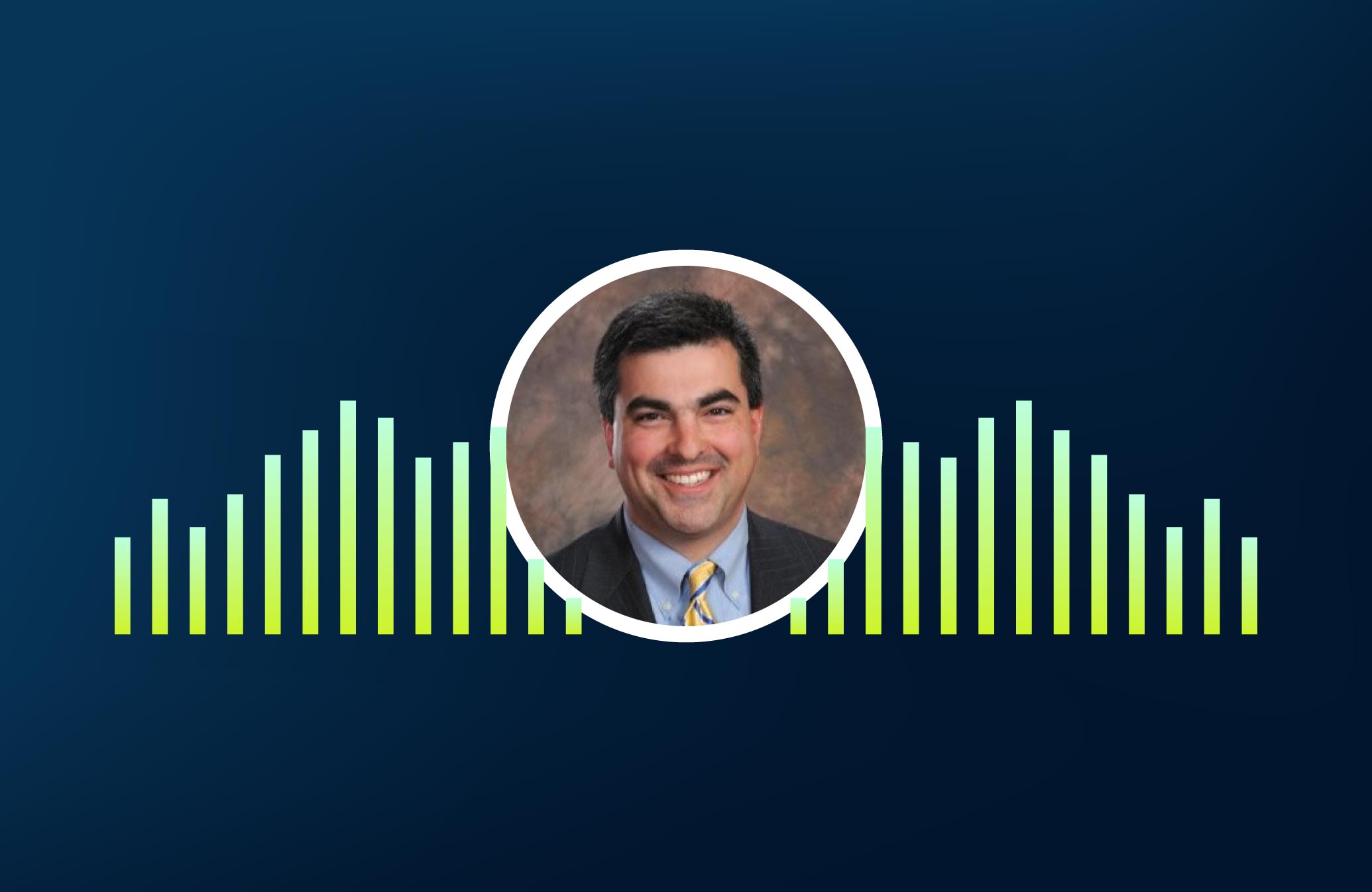Listen Now
Episode Transcript
Announcer [00:00:00] Welcome to RadioRev, podcasting from the heart of healthcare in Minneapolis, Minnesota. This is the podcast for change makers looking to do more than just health engagement. It’s about getting people to take action and do things that actually improve their health. It’s a radical idea, right? So we’re talking with the leaders, innovators, movers, and shakers who are bringing new ideas, inspiring others, and leading the way.
Jenn [00:00:26] Welcome to another episode of RadioRev. I’m Jenn Dellwo. Thank you for joining us for episode five of season two. This series dives deep into Social Determinants of Health, offering various viewpoints on the topic with a different industry expert each week with the hope that you take away new ideas, perspectives, and are inspired to look at SDoH in a new light from all angles. As a collective, the goal of these conversations is to inspire innovation and motivate the healthcare industry to work together to create meaningful solutions that help people live stronger, healthier lives. Today we’re joined by Matt Swanson, Director of Product Design at Icario. Matt, welcome to the show. Thanks so much for being here.
Matt [00:00:59] Thanks a lot for having me. It’s good to be back on again.
Jenn [00:01:02] We’re excited to have you back. You have been on before, and so we learned your favorite ’80s song in the past. Now I’d like to know your favorite ’90s song.
Matt [00:01:10] Okay. It’s one that I listened to recently. There’s a song called “Look on Down from the Bridge” by Mazzy Star. It’s really sad, it’s soft, but it’s really beautiful, and it’s funny—I was listening to it and thinking, oh yeah, this must’ve come out like 10 years ago. No, it’s more than 20 years old now. {music plays}
Jenn [00:01:54] Awesome. Well, thanks for sharing that. Why don’t we start with a little bit about you, a bit about your background and your role at Icario?
Matt [00:02:01] My background is steeped in design, design strategy, design process. And one of the great things that the field of design has brought into the forefront of how business is done now is really thinking about how people experience their lives and how they think about what they do day to day and from a real-world perspective. And it so pulls a lot from behavioral sciences and things like anthropology, psychology, cognitive sciences. And so as Director of Product Design, I kind of bring that set of skills to bear in our team and in how we build our business, and in how we build out our technology and infrastructure, because we at Icario work in healthcare. And healthcare is really about how people make decisions, the sorts of actions they actually take, and how they think about those things, because health is really central to how people think about their lives. It’s really integrated with every part of their life.
Jenn [00:03:14] For this episode we’re still talking about Social Determinants of Health. But we’re talking about the intersection of SDoH and behavioral research. So if you could, on a basic level, tell us what behavioral science is and how it can be used in healthcare.
Matt [00:03:30] Yeah, sure. So ‘behavioral sciences’ is kind of this umbrella term for essentially any scientific study of human—even animal—behavior. And we at Icario, we practice a form of applied behavioral science that draws from, as I said, psychology, anthropology, cognitive science. And how does that apply in healthcare? What we know about how people truly work tells us that there are extreme limitations to what we can attribute to, say, things like personal choice, free will, willpower. So I’m not going to make the claim here that free will doesn’t exist. But what we’ve seen tends to point away from it being useful. So how does that apply to healthcare? Well, for example, everyone knows what they have to do to be healthy. People say things like, “Oh, yeah, I know I need to work out more. I need to eat healthier. I need to go to the doctor. I need to get all these screenings done.” So if people know what they need to do to be healthy, why don’t they do it? What actually causes someone to make the decisions that they make? What is it about their beliefs, their habits, their day-to-day practices that makes them reach for the bag of Cheetos instead of the apple? We actually have some pretty good data around the effects of applied behavioral science in healthcare, for example. So here’s a pretty simple one. There’s a super strong correlation between increasing the price of cigarettes and the lowering of purchasing cigarettes. And we have a string of data that tells us that the more cigarettes people smoke, the worse their health outcomes are. And so if we apply a very simple behavioral model, which is that people don’t want to spend money on things that are expensive, then they will be healthier in the long term by not purchasing as many cigarettes. Companies do this all the time. There are all sorts of little ways that you see companies trying to utilize these little things that we know about humans to help accomplish whatever goal they’re trying to accomplish. Facebook is probably the most common example. Even things like, I don’t know if you’ve ever noticed, companies often offer you three options or tiers to purchase things at. Have your ever seen that before?
Jenn [00:05:59] Yes.
Matt [00:06:00] So usually that’s to make one of them, usually the middle one, look the most appealing. So you might have thought before that the middle one was too expensive or something. But by seeing a really expensive option that’s really fully featured, it makes that middle one really appealing. So how does this apply to healthcare? If we can push people in ways that lead to healthier outcomes, like if we can intentionally design systems so that people end up in a healthier spot, wouldn’t we want to do that? Why wouldn’t we want to do that? So health gets even more complicated because how do you design a system that involves everything in your life? These are really hard problems that healthcare is up against. So someone from my background might approach, say, a diabetes management project through the lens of, OK, so we know that diet is really important. We know that managing medication is really important. We know that having a relationship with the primary care physician or a specialist is really important. So what are they doing in their lives that would impact that? And how do we create a service or offering or what are the right sorts of touchpoints to have to really help them manage their diabetes better, for example? And so what you end up doing or finding is that it’s about people’s social connections—how they relate to their family, how they relate to their friends, the sorts of food they eat, and how that relates to their social interactions and how they go through their life day to day. So these things get really hard because how do you convince a family to eat healthier meals which will help them manage their diabetes better or even maybe allow their kids to recover from whatever, early onset diabetes that they’re having, what will prevent cardiovascular issues down the line, et cetera, et cetera? When they’re cooking, their meals are central to their lives and recipes passed down from grandma, recipes they’ve enjoyed together every night when mom and dad are stressed, overworked, underpaid, and the kids are stressed. Institutions and healthcare are really starting to ask themselves these questions up and down the board, and the approach to behavioral science seeks to tackle these questions from the person’s lived experience, which is an easy thing to forget when things like clinical and population health outcomes are the things you’re dealing with day to day. And you start to imagine that everyone’s priorities are the same priorities as yours. And so what we seek to do, what our design team seeks to do, and what behavioral scientists all over the world who are trying to apply this in healthcare seek to do is bring that lived experience inside the four walls and look at what actually works in the real world in a person’s day-to-day life. That’s a lot. That’s a long response because healthcare is huge and behavioral science is huge and their intersection is really multifaceted and takes a lot of different forms.
Jenn [00:09:15] Yeah, it’s not an easy question to answer, but it’s super interesting. Going back to the topic of Social Determinants of Health, what role does behavioral science play in addressing SDoH, and how are the two connected?
Matt [00:09:29] This is so interesting. Again, Social Determinants of Health is a very broad set of topics. But it’s also great because in a similar way to behavioral science, it starts to draw an outline to some really important topics and some really important ways to start to address things. So here’s how I see Social Determinants of Health. And it’s not comprehensive. It means a lot of different things. But my shorthand is that it’s a term that gives us a tool to broaden the scope of what we consider when we consider health. The obvious example is things like, well, is a person going to do a better job of managing their condition or staying healthy when they have a bed, when they have things to eat, when they have gainful employment, when they are less stressed because of the stresses that we know are caused by poverty? Yes, absolutely. So if we’re really trying to impact—I’ll go back to the diabetes example—if we’re really trying to impact a person’s ability to manage their diabetes well, maybe looking at whether or not they have a place to sleep or decent food to eat is really important. Behavioral science does the same thing. It says hey, it’s not that people don’t know what you know, maybe they do. Maybe they don’t. It’s that they don’t believe what you believe, or at least they have many other priorities. Or your top priority as an insurance company or practitioner, say, in the healthcare space isn’t always the same as theirs. Social determinants say, hey, I wonder if we could improve people’s health outcomes by helping them get food or whatever. So what role does behavioral science play in addressing social determinants? How are they connected? It’s really a similar role, institutionally broadening the conversation about what health is, and they’re essentially addressing each other in a lot of ways. Behavioral science can help in addressing Social Determinants of Health and Social Determinants of Health gives behavioral science a new field to play in and a new kind of sharpened set of policy and efforts inside of healthcare.
Jenn [00:11:52] That’s great. And a great segue to my next question, which is, how is Icario leveraging behavioral research to help healthcare organizations address Social Determinants of Health?
Matt [00:12:02] The same way we are for any other health issue. Social determinants is a health issue, just like any of the rest of them. If someone can’t get their medication, that’s a health issue. If someone doesn’t have steady employment, steady income, or access to food, that is also a health issue. So what do we do? We think, what is the best outcome possible to improve the health and well-being of the people our clients serve? And how do we do that? We go and we talk to them about their lived experience. And it’s interesting because as we’re thinking about recruiting people to talk to people, to observe people to bring inside of our four walls, there’s often a very common misconception that when we think about places where people are insured, that social determinants are kind of bound to say Medicaid or even duals, where what we actually find is that there are more social determinant needs inside of a Medicare population. And given the shape of the economy today, we see a lot in the employer space as well. I mean, kind of think about headlines criticizing Walmart for having employees on food stamps, for example. So we’re asking them the same sorts of questions and doing very similar sorts of investigations. What is your life like? What’s important to you? What is health to you? What do you struggle with? What do you enjoy? Tell me about a time when you struggled to put food on the table. Tell me about a time when you went to the doctor and were confused. Tell me about a time when you couldn’t go to the doctor. And that helps us understand who to contact, how to contact them, what sorts of things we should be talking about with them when we do contact them, and recommendations that we can offer our clients for the right kind of resources to offer or how to shorten that gap between the initial touchpoint of communication and being able to, say, close a gap or offer something of value to the person who is struggling most.
Jenn [00:14:20] So to bring this to a real-world example, Icario published a guide called “Six SDoH Insights to Break Down Barriers,” where your team conducted field research to understand the barriers people are facing every day. Can you tell us some of the insights that came out of that research?
Matt [00:14:37] Again, one thing that is interesting was just how social determinants were not contained by the types of insurance people have. You know we kind of have that idea of oh, commercial is one thing, Medicare is one thing, or Medicaid is one thing. You see these needs across the board. Sure, there might be a portion of Medicaid-insured people who have very extreme, very highly acute needs, but you’ll see that in Medicare and commercial as well. And there’s a few other things that I’ll talk about. It’s interesting how the insights we gathered in this effort really overlap with the insights we feel like we’ve seen in other studies. For example, all say one of them is qualifying for benefits is one thing, but needing to constantly prove that you have them is another. So what we see is that a lot of the people who are most impacted by Social Determinants of Health come from an experience where there are generations of trauma. And what I mean by that is a history of institutions, people, governments, programs, companies, failing them and not delivering the services in a timely way, maybe not in an equitable way and feeling like they are on the outside of society. And what happens when you’re on the outside of society? You have a much more transactional relationship with the institutions you’re dealing with. And so what we find is that organizations measure themselves against their own service. But what they should be doing is measuring themselves against all of the ways that systems have failed them. For example, we spoke to one social worker whose number one method for beginning that relationship is making it very clear what people are going to get out of the service that she’s offering and what they have to give back. Because they have a very clear sense of the system and all the ways that it’s trying to extract value from them. And so they’re looking for what is this transaction? How do we get really clear about it, and what am I going to have to offer back here? So what does this mean for people? Well, most people believe that quality healthcare and benefits are something all people should have access to regardless of their situation. But people in these situations where they have been experiencing generations of trauma and generations of being rejected by or treated marginally by the system are always having to prove themselves. And you’re never going to get a foothold of trust with them unless you’re constantly proving that you are delivering the benefits that you say that you’re delivering. You have to be super direct about things and you have to be super to the point. And you have to help them understand that you’re trying to reveal as much about how your benefits work as possible. So lots of direct language, lots of support. Communicating too much is not going to be an issue with these people.
Matt [00:17:56] Say, another one that I thought was really interesting was understanding the why behind member actions and doing it with respect. And we learned a few things about what feels obvious, but we learned a few nuances about what this means. It was really helpful. So you can tell that we’re often going to sort of mavens in the community to help us understand what it’s like to help serve people and how we can draw from those years and years of experience to apply to our own products and services. So we talked to a social worker. We also talked to an on-the-ground Department of Health employee in a pretty poor county in Arkansas. And for her, she talked a lot about how key respect was to how she deals with their clients and even how some of her coworkers don’t treat their clients with respect and often don’t get the same kinds of results that she does. She talked about how she doesn’t know what they’ve dealt with, what they’ve gone through in their own lives. And they’re just little things that she would do that were so interesting and helpful and felt so kind, like she learned from experience that when people came in, some of them wanted the door closed because they wanted to have some privacy, because they were embarrassed about the situation there, and they didn’t want people overhearing. And some people wanted the door open because having the door closed with a stranger made them feel unsafe, even little things like having individually wrapped prunes out on her table. She said that specifically, individually wrapped prunes. And you kind of see how these little turns of adapting to a person and allowing them their privacy or their safety can really help them open up and tell you the truth of what’s going on, because often they’re not going to want to tell you the truth, because people will often believe that an insurance company, a healthcare organization, is out to take services away from them or to extract something from them. And they’re going to have to play the game to get what they feel like they need or deserve out of the system.
Jenn [00:19:57] So interesting and really important for us to keep in mind. Were you surprised by any of the insights that came out of this research?
Matt [00:20:05] I guess I was surprised most by how much social determinants and providing services to help improve a person’s life such that they are better able to take care of their health. It is so much just like everything else. It’s just a different set of needs and a different set of experiences. And even within Social Determinants of Health, which is again a really broad topic, there are still broad differences within populations. So, for example, I talked a lot about generations of trauma. There are some people who are brand new to this, and you see them responding really differently. Going back to the person who worked at the Department of Health in a county in Arkansas, thinking about her experience, she found really different approaches worked best for people who were used to working inside of the system versus the people who had just been laid off from the plant. The people who’d just been laid off from the plant, for example, who were brand new to using the Department of Health and using her resources, had to have their hands held a lot more, had to be guided through a very complex bureaucratic process, as these typically are. Whereas the people who were more used to dealing with the system were much more able to jump through the hoops or had a much easier time jumping through hoops and didn’t need as much handholding, which is surprising to me because you might imagine that someone who has a lot more needs would need a lot more support. And it’s not really the case. They’re kind of used to how the system works and having to go to, as she put it, instead of just A to B, A to C, then C to D, and then D to B, and people new to the system are not going to be really used to that—not used to admitting that they need help even.
Jenn [00:22:00] When you say it like that, it makes a lot of sense. You mentioned as we were preparing for this episode that some people feel Social Determinants of Health isn’t the right term for what we’re talking about, and that ‘drivers of health’ feels like a better fit. Can you talk more about why that is?
Matt [00:22:16] Yeah. So there’s another great podcast that people should listen to called A Healthy Dose that does a lot of healthcare topics. And they had some former Health Leads people on. Health Leads is a great organization that actually started diving into Social Determinants of Health in, I want to say the late ’90s, when they were first really pushing on it before it was called Social Determinants of Health. And they did a whole bunch of focus groups and interviews specifically around the terminology, because they’re much more in the Washington policy space. And the broad terms that get put on these things are really, really important for them. And Social Determinants of Health—what came out of their research sounds like it’s disempowering for the individual. It’s that their health is being determined by something external. And the drivers of health was the thing that rose to the top as being the best fit, because it still references that there are outside influences that we really need to think about and be working on. But it doesn’t take away the power that that individual has to affect their own health. And it doesn’t make them seem helpless. It actually makes them seem like they’re in control, and they can influence these things and have some autonomy in their own life, which is super, super important, especially in America. A very effective way to help people push on their own life and take control of things is by feeling like they’re in control of things. So there’s a little bit of a movement to try and change the terminology. But the words, the phrase Social Determinants of Health is so in the DNA of healthcare now that it might never change. We’ll see. We’ll see what happens there.
Jenn [00:24:08] Yeah, well, it’s interesting. We had an episode earlier in the season that was all about the right terms and definitions we should be using. And I think what came out of that conversation that was most important was we do need to have terms and definitions, but we shouldn’t get so caught up in them that we stop addressing the problem and we are only focused on the words.
Matt [00:24:32] Yeah, that’s a classic thing in healthcare, getting very, very obsessed with the language and losing sight of the actual problem, and the language being the only lens we have on that problem. Things are always moving and always changing. I love that.
Jenn [00:24:50] So many healthcare organizations are experimenting with different solutions to address SDoH. What are some of the most innovative examples you’ve seen?
Matt [00:24:59] Well, everyone’s getting on board. Everyone’s got something. There are a lot of efforts in transportation, for example, because that seems like the easier thing for a lot of healthcare companies to pay for and to build into their own organization. I’ll say one of the most inspiring projects that I’ve seen is UHC’s myConnections, which has pilots in I think more than a dozen cities now. They launched initially in Phoenix, Milwaukee, and Las Vegas. And I know they’re doing a lot now, but on that initial launch, they were essentially building housing and offering it to some of their most high-risk Medicaid members. And so this project came from a guy named Dr. Jeffrey Brenner, who was a huge advocate of Housing First policies. And Housing First just means, you know a lot of social services in this country require you do something before you get housing support. For example, you need to test clean for whatever drug addiction you’re working on, or have signed up for a job training program, or have a job, or something like that. And what a lot of people are finding now is that it’s really hard to do those things before you get the home. And you see a lot of improvements in people’s social lives and the things that they’re able to do if you just give them a house first, and you don’t put any barriers. So UHC rolled the dice and made a bet on that being an effective way to help them improve outcomes and care for people. They also did some other things that were really interesting. They had health coaches on site, they had care managers on site so they could help these people get to appointments, help them get access to resources, help check in on them, and just make all the connections and kind of wrapped services around these people that they needed to.
Matt [00:26:58] There was a great article from Bloomberg. What was really interesting is that they had one person that they were talking about, can’t remember his name, but he had multiple sclerosis, cerebral palsy, heart disease, diabetes, a whole bunch of conditions. And he was homeless before UHC got him into this apartment through their myConnections program. And I’m going to get the numbers wrong, but I’ll get the scale of the numbers right. The year before moving in, this person had gone to the E.R. something like 80 times and spent on the order of 20 days hospitalized, which gave him medical costs on average of about $13,000 a month. Now, this is where social determinants really start to crystallize for me, because if you are an insurance company, and you’re on the hook for $13,000 in medical care per month for an individual, it feels like you should be able to house someone, offer them food, give them all sorts of care and support that they might need for way less money than that. And in the nine months since this person got a roof over his head and health coaching through the myConnections program, this person’s medical expenses dropped on the order of $2,000, so from $13,000 a month to $2,000, which $2,000 a month is a lot, but it’s, what, 20% of that $13,000 per month beforehand, which is just astounding to me and astounding that more healthcare organizations aren’t diving in head first to similar programs.
Jenn [00:28:41] Yeah, that’s such a good example to drive home why it’s so important. Looking at SDoH through the behavioral research lens, what are the biggest opportunities to make an impact?
Matt [00:28:52] I think the biggest opportunities are helping to break down some of the biggest stereotypes that we have about people and why they’re in the situations that they’re in. I think people would be surprised to understand how common these problems are and how much the people who are suffering from them look like, act like, talk like, are the same people as us, as our neighbors, are working hard, are doing the best things that they can, are making the actual logical and rational decisions for them and their family. I feel like if we can start to break those down a little bit. We tend to infantilize the people we put in this category, and I think that’s doing them and us a huge disservice. That’s why the insight about some of the ways that you can show the proper respect for someone and understand their why for doing things is really helpful. We tend to assume that people are doing the wrong things, and if we correct that, then they won’t have these problems. It’s actually not the case. People are making absolutely the right decisions for themselves. And I think that behavioral science can really help understand that and communicate that in a way that healthcare organizations can take some pretty strong action on.
Jenn [00:30:18] So as we wrap up, for health plans or others listening to this that are interested in leveraging behavioral research, how can they get started? Do you recommend partnerships, or can they get this off the ground within their own organization on their own?
Matt [00:30:32] So they’re certainly welcome to reach out to me if they’d like a more personalized recommendation. But there are many, many organizations that can help them. Design and experience strategy agencies were kind of among the first to really bring this approach to bear in business. But some of the best that I’ve worked with include places like Continuum out of Boston, Worrell here in our hometown of Minneapolis, and I think Mad*Pow is in Boston as well. Those are great organizations that will be able to either provide recommendations, run some projects with you, or help you build out a whole organization if you’re interested in building out a strong organization that can address these things. I’d also recommend looking to your internal design teams to see what they’d like to be doing differently. I have found that organizations will often hire designers without a real clear idea of what their background is and what skill sets they can bring to bear. Certain kinds of designers, and many kinds of designers, especially people like UX design, product design, those people have had training in a lot of applied elements of behavioral science. So it’s very common for organizations to actually have this skill set latent inside of their four walls and just not fully understand how to utilize it or not understand that they can utilize it. And the agencies I’ve mentioned, Continuum, Worrell, Mad*Pow, can certainly help you understand how to better build out that competency internally. If you’re interested in talking to Icario, we of course do this in our own way, and we can talk to you about that. But we’re a more nimble organization. Our method of putting this work in at the foundation of what we do, and the technology and all the process in the data science might not be a copy/paste for larger healthcare organizations, but we can at least shed some light on our approach.
Jenn [00:32:37] That’s great. So on the personal side, what’s the coolest thing you’ve done lately?
Matt [00:32:41] So this is very topical, hopefully not too topical, but I’m talking to you right now from inside my closet to get the best audio I can in response to the office being closed and Minnesota having issued a shelter in place policy because of the outbreak of the novel coronavirus and COVID-19. And so the past couple of weeks, our company, Icario, has been working remotely, everyone working at home, staying safe and really amping up our efforts around programs in response to the outbreak. So it has been really cool understanding the landscape of communication and information out there with COVID-19 and really understanding how it feels like there’s a bit of an information war almost that every organization and institution is a part of. And the CDC, and Medicare, and a lot of parts of our government have done an awesome job just cranking out information and trying to clarify what to do and what not to do. And there’s even been massive grassroots organization to try and help people understand. You may have seen online there’s been a lot of circulating diagrams about places people miss when they wash their hands. What are the big five things to do is now on Google’s homepage, but there’s also a ton of misinformation, too. I recently spoke to a 70-year-old man who was painting his house in Florida and was texting with his adult kids, making plans for when they were going to come visit again. And he had no idea about the coronavirus or COVID-19. He thought that they were playing a joke on him. They said something about how it originated in Wuhan, China. And he said, well, I’m not planning on going to China, so it shouldn’t affect me. There’s still people who are out there who just have no idea what’s going on and don’t know about the severity of it and what their options are, what resources there are to go to, so it’s been really fascinating unpacking that and thinking about how we can apply that and hopefully take some of the pressure off some of these other organizations and allow them to do the really on the ground helping the most vulnerable people day to day.
Jenn [00:35:19] Yeah, absolutely. Well, thank you so much for joining us from your closet. I really appreciate the flexibility. If people would like to connect with you, what’s the best way to get in touch?
Matt [00:35:29] Yes, I’m pretty old school. I try to stay off social media. It ends up sucking me in. I get too addicted. So I’ve canceled all my social media, so I’ve got no Twitter handle or any other handle to offer. But my email is a great way to get in touch with me. And that is Matt.Swanson@dev-revel-health.pantheonsite.io.
Announcer [00:35:45] Thanks for joining us for the RadioRev podcast, brought to you by Icario. If you found today’s conversation as informative and energizing as we did, please take a moment and subscribe to the podcast. As always, we invite you to learn more about us and check out all of our content at dev-revel-health.pantheonsite.io/RadioRev.
Inside the Episode
In this episode Matt Swanson, a human-centered design expert and behavioral researcher, joins the show to talk about the role that behavioral research plays in addressing social determinants of health. Key questions Matt answers in this episode include:
- How behavioral research and social determinants are connected
- What insights came out of the research conducted to identify SDoH barriers
- The biggest opportunities to use behavioral research to make an impact in SDoH
To keep the conversation going, connect with Matt on LinkedIn.
“To learn how people feel about healthcare you need to understand their social connections—how they relate to their family, how they relate to their friends, the sorts of food they eat, and how that relates to their social interactions and how they go through their life day to day.”

Matt Swanson
Human-Centered Design Expert
Can’t get enough of RadioRev?
We’ve got an entire season dedicated to social determinants of health to keep you inspired! Listen to the next episode in the series for another new perspective on SDoH.




